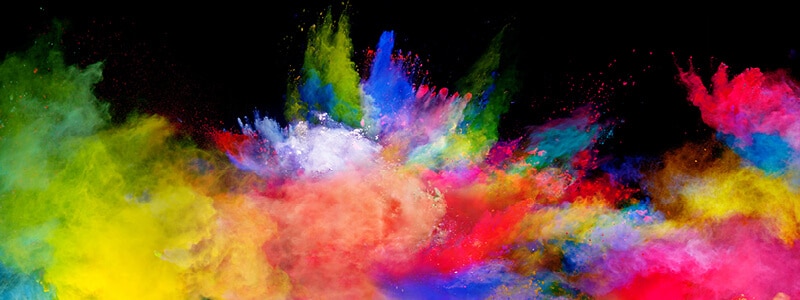
Much is made of the psychology of colour, with different hues said to convey different attributes and invoke different feelings.
Red signals excitement; blue, intelligence and trust; orange, warmth and fun. For this reason, many brands look to colour to create a specific look or feel for their event or exhibition stand.
But there’s a problem. Red is also linked with aggression, blue with coldness, orange with immaturity.
While colour psychology is often simplified to ‘green equals this and brown equals that’, a true psychological approach goes far deeper. If you’re looking to introduce this approach into your event, an awareness of how the perception of colour varies depending on context, audience and culture is required.
Colour and audience
While the colours you choose for your event or exhibition stand may appeal to you, the real test is whether they appeal to your audience, which will depend on a variety of factors. Age and gender can both have an impact on colour preferences – and with colour blindness affecting one in 12 men and one in 200 women across the globe, your efforts could well falter through no fault of your own.
Joe Hallock’s Colour Assignments study shows some clear differences in colour preferences by age and gender – while, interestingly, our stereotypical “pink vs. blue” is a recent phenomenon, with boys regularly dressed in pink and girls in blue beyond the 1920s.
Our perceptions of colour also vary depending on our personal situation: anything from a favourite comfort blanket to a much-loved teddy bear can affect our warmth towards a certain colour. A “one size fits all” approach will not work when it comes to engaging large audiences.
Colour and culture
Host an event in India, and you may be tempted to make red the primary base for your branding, representing, as it does, power and strength.
Replicate the same red colour scheme in South Africa, though, and you may find yourself with a more sombre mood: it’s a country where red is linked with mourning.
When planning an event, remember that a colour’s meaning can translate in a variety of ways across cultures. In Asia, orange is a spiritual and positive colour, while in the US, it is often linked with traffic delays, road hazards and fast food joints. Even yellow, a warm and cheerful colour here in the UK, signifies betrayal in France, jealousy in Germany; while a “yellow book” is a common term for pornographic material in China.
In 1999, research published in the Journal of International Marketing analysed colour perceptions of natives of eight different countries. The results showed that green, blue and white had similar meanings in each country, while red and black showed considerable semantic differences.
Colour and context
Finally, perception of colour also depends on context. In the report Colours Across Cultures: Translating Colours in Interactive Marketing Communications, the authors highlight that “a group of people wearing black might be the crowd at a gallery opening, priests, Mennonites, a punk band, ninjas, Kabuki stagehands, Bedouins, mourners, or a mime troupe.”
Colour may be important when it comes to branding, with one study claiming that 62-90% of people’s assessment of their initial 90 second interaction with a product or person is based on colour. But a further study from 2006 shows that this decision is about the “perceived appropriateness” of the choice of colour: that is, whether a particular colour “fits” a particular brand.
The Isolation Effect is also worth considering, when it comes to event branding. This is the tendency for humans to remember something that stands out in a group, more than they remember its peers. A/B testing a red and a green sign-up button on the Performable website saw the red button outperforming the green by 21%, thanks to the greater visual contrast it offered.
When it comes to colour, context is everything: ensuring the right fit for your brand and your circumstances is key.
While colour psychology is a popular topic in marketing, it’s essential to remember that choosing a colour based on the feeling you’re evoke is unlikely to succeed. Instead, consider your audience, their culture and the context in which your event colours are to be displayed.
Colour can be a powerful tool when used in the right way – but if you’re simply planning on decking your stand out in black because you think it makes your brand look slick and professional, then don’t. Black can also represent bad luck – which is just what you’ll encounter if your colour strategy hasn’t been carefully thought-through.
Subscribe and stay up to date
receive essential emails.


